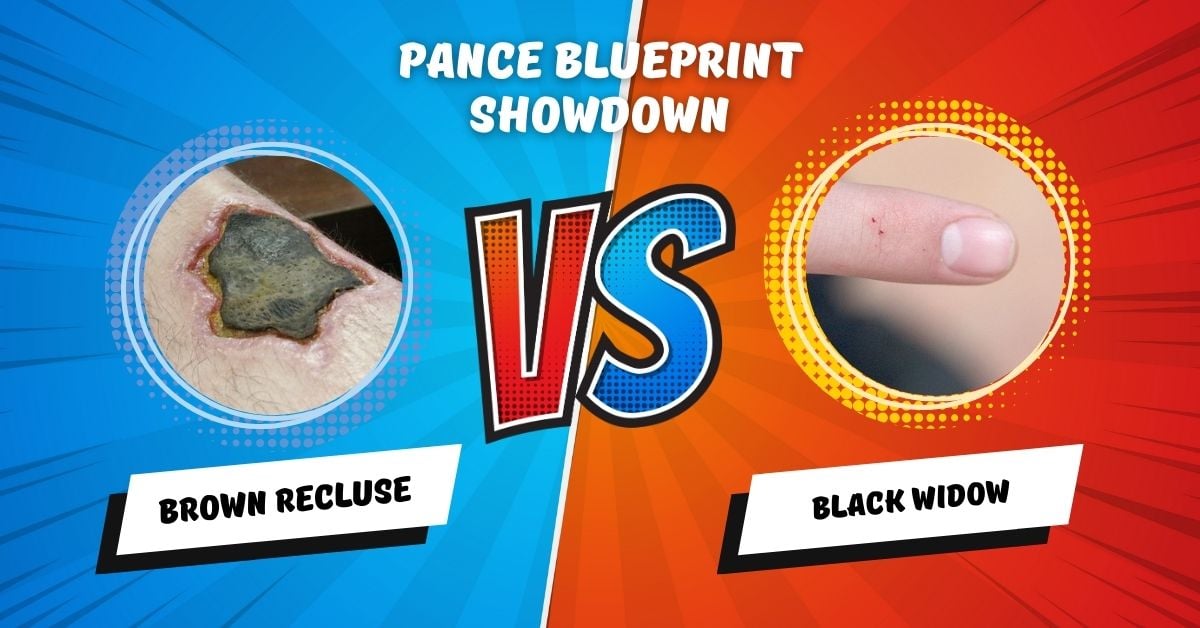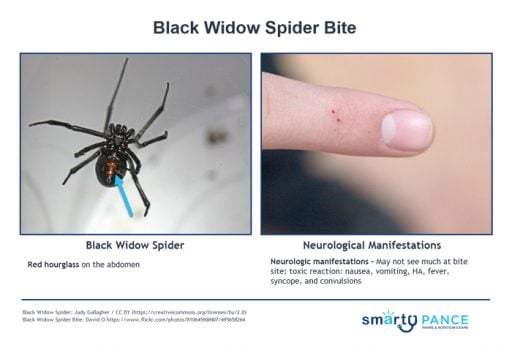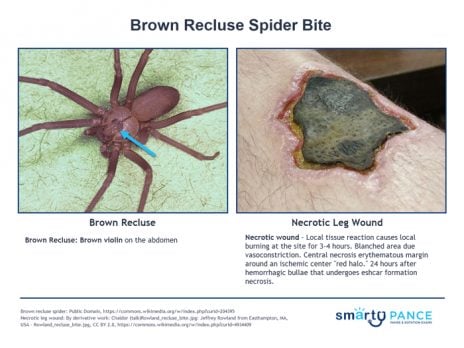Spiders may seem creepy, but most are harmless. However, the venomous bites from black widows and brown recluses spiders can cause concerning symptoms and is an important skill for real-world clinical care.
Also, given the similarities of these two conditions, this is low-hanging fruit for exam writers, and differentiating between these two spider bites is a common exam question for your PANCE, PANRE, and EOR exams.
Today, we're going to break down one of the classic showdowns you absolutely must know for the PANCE blueprint: Black Widow vs. Brown Recluse spider bites.
Here are the key diagnostic clues to distinguish black widow vs. brown recluse spider bites:
Black Widow Spider Bite:
- Sharp pinprick pain at the bite site that develops rapidly
- Muscle cramping/rigidity, especially abdominal rigidity
- Sweating and tremors from neurotoxic effects
- Minimal local reaction at the bite site
- Rapid onset of symptoms within hours
Brown Recluse Spider Bite:
- Minimal pain initially at the bite site which intensifies over days
- Development of a "bullseye" lesion - central blister with surrounding redness, then a blue hue
- Local tissue necrosis at the bite site
- Delayed onset of symptoms, days after bite
- Systemic symptoms like fever, malaise, arthralgia
The rapid onset of systemic neurotoxic symptoms like muscle spasms and abdominal rigidity point toward a black widow bite. The slower development of a necrotic wound with systemic symptoms indicates a brown recluse bite. The key is knowing the time course and effects of the different venoms to distinguish these spider bites.
Black Widow vs. Brown Recluse Spider Bites
| Feature | Black Widow Spider | Brown Recluse Spider |
|---|---|---|
| Sample vignettes | Patient with a black widow spider bite will present as → a 21-year-old who returns from a camping trip early, complaining of a dull numbness affecting his upper left extremity. He recalls a sharp pinprick sensation before the development of symptoms. The patient now describes cramping pain and muscle rigidity of the back and chest area. A red, indurated area is found on the distal left arm. The patient has profuse sweating, nausea, vomiting, and shortness of breath. | Patient with a brown recluse spider bite will present as → a 32-year-old man who, approximately 5 days ago, was cleaning out his dark, undisturbed attic. That day, he noticed an erythematous lesion with a clear center on his arm. Since then, the lesion has necrosed in the center, giving rise to a crater-like eschar lesion. |
| Appearance | Shiny black body with a red hourglass marking on the abdomen | Brown violin marking on cephalothorax |
| Habitat | Garages, sheds, outdoor woodpiles | Indoor spaces like closets and attics |
| Toxin Effects | Neurotoxic, affecting the nervous system | Cytotoxic, causing cell/tissue damage |
| Bite Symptoms | Sharp pinprick pain, abdominal rigidity, muscle cramps/spasms, sweating/tremors | Minimal pain initially, then intensifies. Bullseye lesion with central blister, surrounding redness/blue hue, local necrosis |
| Systemic Symptoms | Nausea, vomiting, headache, hypertension, priapism | Fever, malaise, arthralgia |
| Timing | Rapid onset, within hours | Delayed onset, days |
| Wound Appearance | Minimal local reaction initially | Central ulceration, surrounding erythema in "red, white, and blue" pattern |
| Lab Findings | ↑ CPK, ↓ calcium | Leukocytosis, ↑ESR/CRP |
| Treatment | Pain meds, muscle relaxants, BP/HR monitoring, antivenom if severe | Wound care, NSAIDs, controversial dapsone for necrosis |
These bites are covered under your PANCE/PANRE Dermatology Blueprint as well as on the Family Medicine EOR and Emergency Medicine EOR topic lists under the category of Envenomation and arthropod bite reactions.
Stay tuned for our next PANCE Blueprint Showdown, where we continue to dissect essential Bluperint comparisons you need to know.







